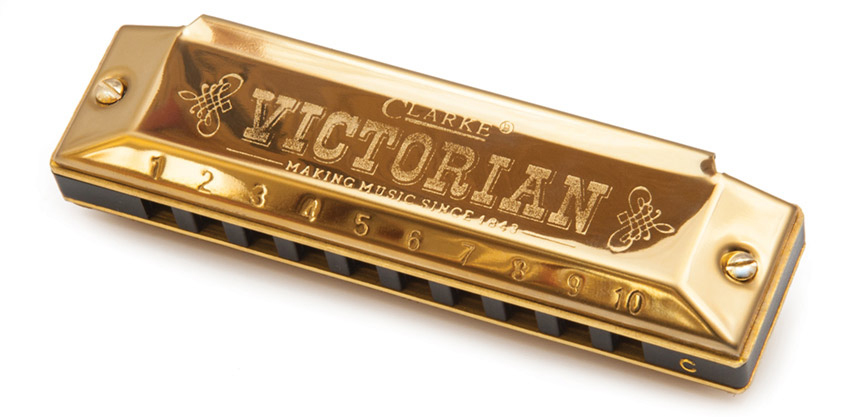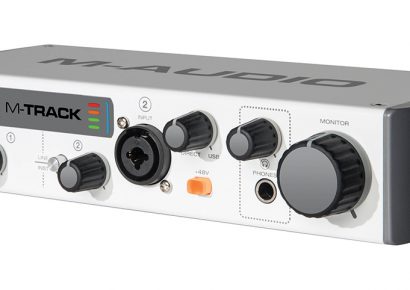The Distant Microphone
The first way to consider capturing your harmonic sound is with a microphone placement that considers how the instrument would sound to someone else in the room hearing it as it’s played, and not amplified in any way.
Essentially, you want to capture the sound as it is heard naturally, so using a large diaphragm condenser microphone is going to offer you the best option, enabling all the dynamic control of the instrument and the brilliant high frequencies to shine through. Setting this up about a foot away from the player will enable you to nd a good balance between getting too much breathiness from the sound and getting lost in room noise. If you get too close with a condenser microphone, it is going to start sounding like the reeds are rattling in your ears, too far away and you will end up with a noisy take, especially considering that home studios don’t always offer the best acoustics. It’s important to achieve a constant distance from the microphone. So, if your harmonic player likes to move around when they play, mark out two spots on the floor with gaffer tape and have them keep their toes on these spots. This will ensure they don’t step away from the microphone or approach it as can often be the natural behaviour of the performer.
The Direct Line
As most harmonica players will use a dedicated microphone on stage for their instrument, this is the next best way to consider capturing their sound. The Green Bullet is by far the most common and well-known microphone for this purpose, but many harmonica players use other microphones for various reasons; predominantly comfort and sound. So, use what your harmonica player has in their kit. If no dedicated harmonica microphone is available, a sturdy instrument microphone like an SM57 is going to deliver a good result in this instance. You’re not going to need to run the gain up very high; the harmonica is going to give you plenty of volume, especially considering the proximity to the capsule. If anything, a lower gain setting with a high pass filter engaged is going to be best, as it will reduce any handling noise. I like to keep compression to a minimum at this stage in the recording process, preferring to keep the gain down to ensure the peaks aren’t too high, rather than squeezing all the dynamics out of the performance right from the get-go. Remember, it’s a direct line-in essentially, so everything is going to stand out and there is no need to be too precious or you’ll run the risk of it sounding manufactured.
Totally Amped
My favourite method for recording the harmonica is to send it through a small valve amplifier, and capture that sound on a microphone like a Sennheiser e609 up close. The little valve amp really gives the harmonica’s tone a whole new life. You get grit, dirt and sparkling brilliance all combined for a really raw bluesy sound that simply cannot be achieved with just a harmonica and a microphone alone. Something like the VHT Special 6 combo is a really cool option for just this purpose. It can run at a low power setting for when you’re recording at home and can’t make too much noise, but it will handle a Green Bullet superbly and deliver a rocking blues tone from a harmonica. Think about small valve amps that offer a clean channel that breaks up nicely; these are going to work a treat with your harmonica recording. The way in which you want to go with it is, ultimately, up to you.







